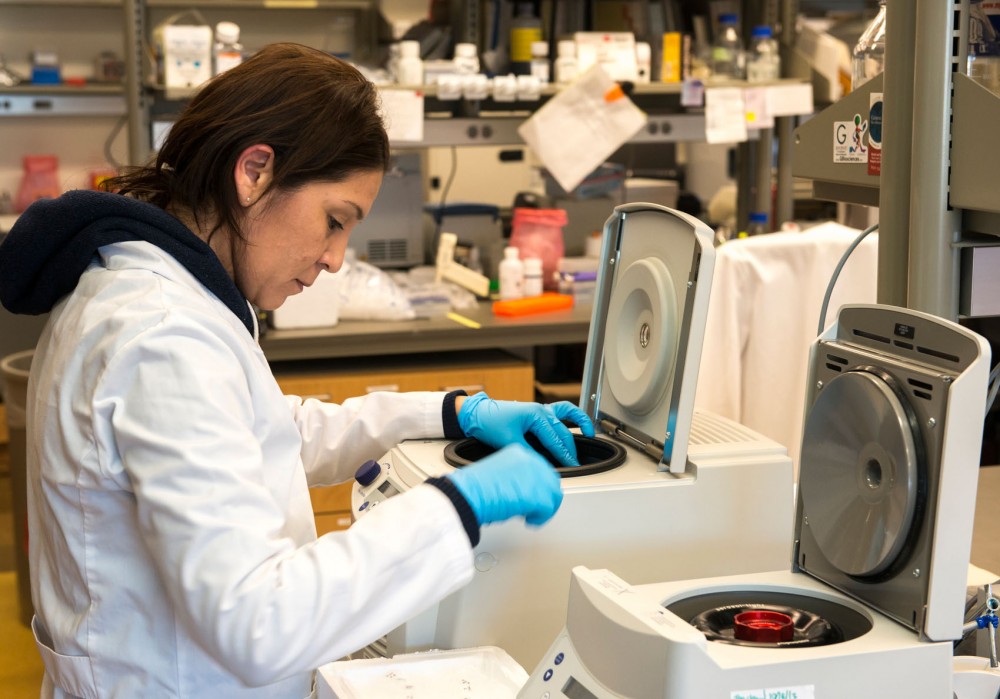Minnesota destroyed more than 1 million blood spots from the Newborn Screening Program earlier this month, after the Minnesota Supreme Court ruled on a more than four-year lawsuit between families and the Minnesota Department of Health.
The decision halted research throughout the state, including in labs at the University of Minnesota. The MDH argues that the research done on these samples over the past 50 years has invaluably advanced understanding of newborn diseases, while the families argue that keeping these samples without consent was a violation of their privacy.
“If you go in to your doctor and your doctor says, ‘I need to do this test,’ they run the blood sample and then they do the test. But [if], instead of destroying your blood sample, they store it in a bank for years and years without asking you, you might be upset,” said Scott Kelly, an attorney at Farrish Johnson Law Office, one of the firms to represent the 21 families who sued.
Newborn tests screen for many diseases that show symptoms only later in life — requiring re-evaluation of the results over time. Dr. Susan Berry, a University pediatrics professor and clinician in the Pediatric Specialty Clinic, which works with babies who test positive for a subset of diseases tested by newborn screening, said keeping the blood spots data is a “public good.”
“Just the other day, I had a contact from a mom who lost her child to sudden death,” she said. “She had wanted to be able to retrieve [her baby’s] spot, but of course, the spot is gone now.”
The MDH previously retained blood samples for up to 18 years for research without parental consent. It will now be able to keep the spots that test negative and their data for only 71 days. If they test positive, the MDH could store the spots and data for two years unless parents opt for longer storage.
“Some of these genetic things we test for are negative, but they show up later in the child’s life, so then we check later to see why it was negative [and] what we can learn,” MDH Deputy Commissioner James Koppel said.
Impact on research
For some clinicians and researchers in Minnesota, the destruction of data puts their work on hold.
University alumnus Dr. Robert Guthrie conducted the first newborn blood spot test in the country 50 years ago. It tested for the then-fatal disease phenylketonuria. Minnesota’s newborn screening program now tests for 55 diseases, said University pediatrics professor Dr. Mark Schleiss.
“This will have a negative effect on Minnesota’s economy in the scientific community,” he said, “because it will handicap the ability for researchers to compete with other states, which means that grants that would provide jobs for citizens would go to other states that don’t have these restrictions on the ability to do research.”
Schleiss said he often refers back to blood spots that are more than 2 years old for children who show disease symptoms later in life. The vast majority of parents want to know if the diseases could have developed before birth, he said.
Dr. Robert Jacobson, American Academy of Pediatrics Minnesota Chapter president, said researchers have already felt the effects of the data destruction. The release of a new test for severe combined immunodeficiency, also known as the “bubble boy” disease, was postponed because of a lack of data.
Two babies have died from the disease since the destruction of the data, he said, and probably wouldn’t have if the researchers could have furthered their work.
A battle between privacy and science
MDH Deputy Commissioner Koppel said receiving parental consent is a timely process requiring coordination between departments. Those who offer consent don’t usually represent the Minnesota population as a whole, he said.
“We don’t have the infrastructure and the opportunity right now to go out and get consent,” Koppel said. “… That’s quite a complicated process, and we haven’t had many consents.”
Berry said the MDH was a trusted place to store blood samples.
“My observation is that the Department of Health has been very good stewards and responsible custodians of that genetic material,” she said.
Kelly, the families’ lawyer, said the department’s use of blood samples for at least 17 research studies, including studies for a drug company, an equipment manufacturer and a large mercury study in the Lake Superior area, were inappropriate uses.
More legal cooperation and public policy discussion from the start, he said, could have prevented the destruction of research data.
Jacobson said the American Academy of Pediatrics is working with the state Legislature to change the law on newborn screening so that Minnesota could legally retain blood spots and data longer.
In the meantime, Berry said, she’s working to educate families at a local level.
“We’re making every effort to help families understand how their willingness to retain their spot will help not only their child, but other children,” she said.


